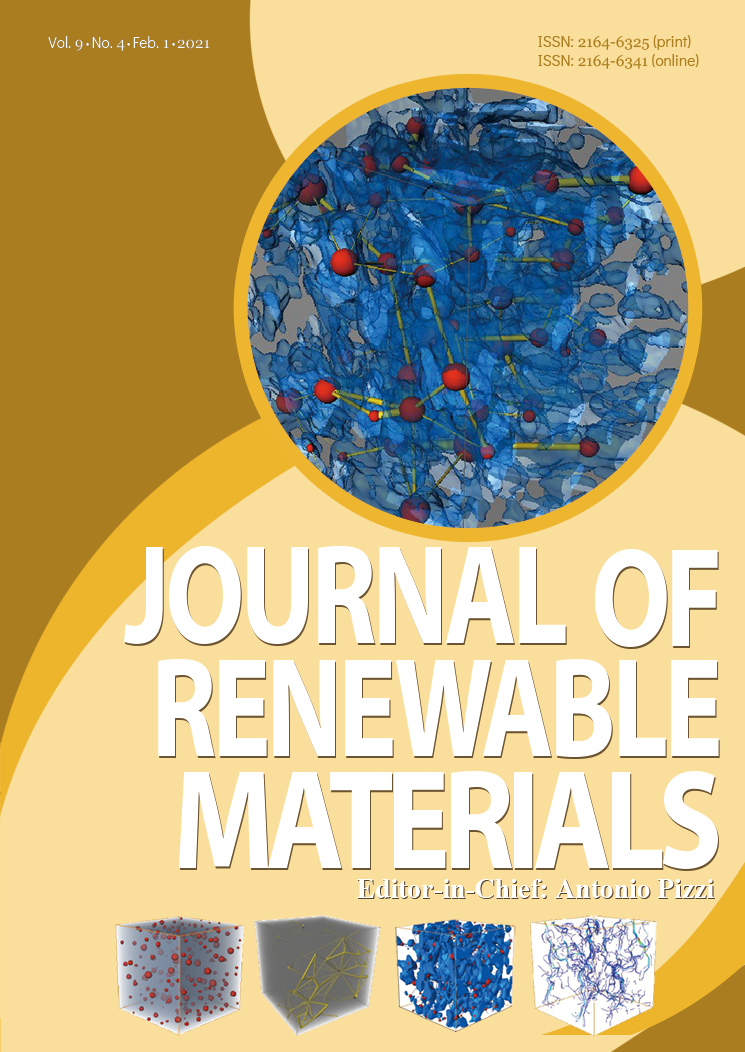Removal of Cu(II), Pb(II), Mg(II), and Fe(II) by Adsorption onto Alginate/Nanocellulose Beads as Bio-Sorbent
Ragab E. Abou-Zeid1, Korany A. Ali2, Ramadan M. A. Gawad2, Kholod H. Kamal3, Samir Kamel1, Ramzi Khiari4,5,6,*
Journal of Renewable Materials, Vol.9, No.4, pp. 601-613, 2021, DOI:10.32604/jrm.2021.014005
- 01 February 2021
Abstract
Alginate blended with cellulose nanocrystals (CNC), cellulose nanofibers (CNF), and tri-carboxylate cellulose nanofibers (TPC-CNF) prepared and encapsulated in the form of microcapsules (bio-polymeric beads). The cellulosic nanomaterials that used in this study were investigated as nanomaterials for wastewater treatment applications. Batch experiments were performed to study the removal of copper, lead, magnesium, and iron from aqueous solutions by the prepared beads. The effects of the sorbent dosage and the modified polymers on the removing efficiency of the metal cations were examined. Atomic absorption was used to measure the metal ions concentrations. The modified bio-polymeric beads
More >
